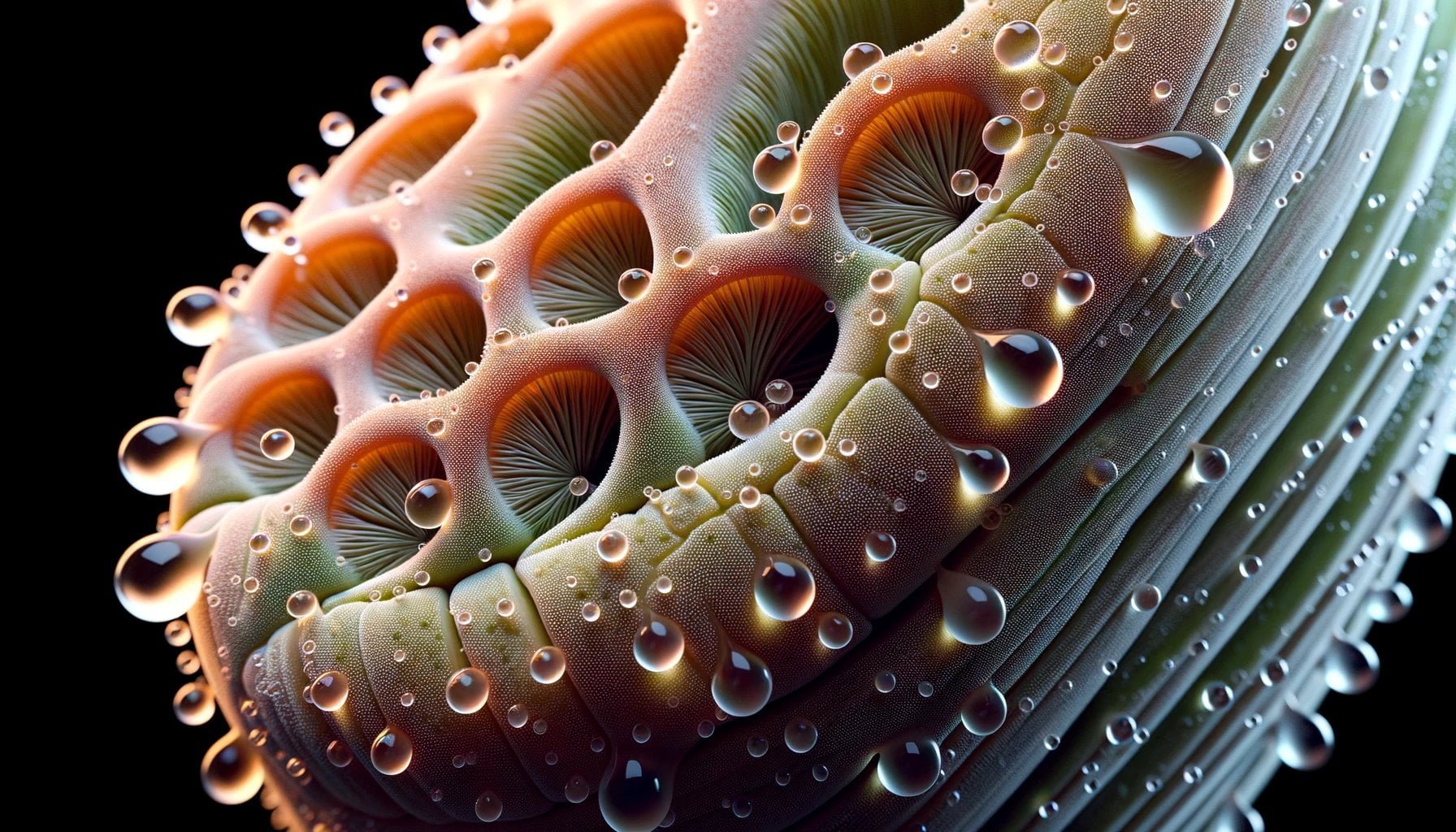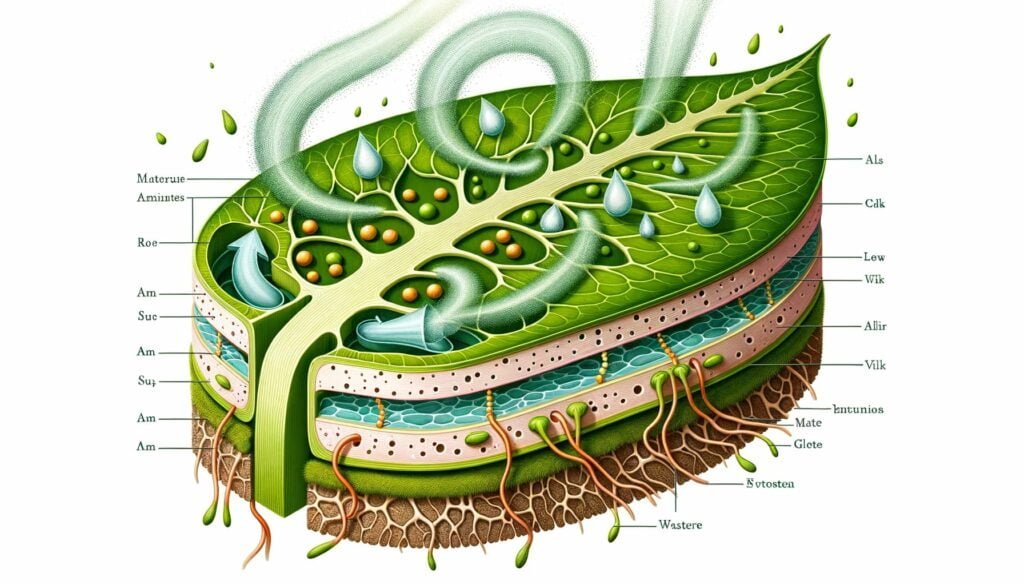Plants have always held an awe-inspiring mystery, captivating us with their resilience and ability to thrive. Yet, beneath their green exteriors lies an intricate and fascinating phenomenon: plant transpiration. Have you ever wondered why plants release water? Join us as we unravel the captivating mystery of plant transpiration and explore the underlying reasons behind why plants transpire water. In this article, we delve into the complex mechanisms that enable plants to breathe, hydrate, and adapt in their ever-changing environments. Prepare to be amazed by the incredible world of plant transpiration and discover the secrets that sustain these remarkable organisms.
Why do plants transpire water?
Have you ever wondered why plants release water? It turns out that this process, known as transpiration, plays several essential roles in a plant’s life. In this article, we will explore the fascinating mystery behind why plants transpire water and uncover the intricate mechanisms behind this phenomenon.
Water, the life-giving force:
To truly understand why plants transpire water, we need to start with the foundation of all life on Earth—water. Just like us, plants rely on water for survival. It is essential for photosynthesis, the process by which plants convert sunlight into energy. Without water, plants would not be able to produce the glucose necessary for their growth and survival.
Cooling down through transpiration:
But water’s importance for plants doesn’t end there. Transpiration also helps to regulate the plant’s internal temperature. Just like how animals use water to cool themselves down, plants release water through their leaves, which helps to dissipate heat and prevent overheating. It’s nature’s way of keeping plants cool and comfortable!
Maintaining the circulatory system:
Transpiration also plays a crucial role in maintaining the circulatory system of a plant. Water is transported through the plant due to osmosis, and transpiration drives this flow of water and dissolved nutrients. Without transpiration, plants would not be able to pull in the necessary nutrients for their survival. So, transpiration not only keeps plants hydrated but also helps them absorb vital nutrients.
Rigidity and support:
You might be surprised to learn that transpiration is also essential for maintaining the structural integrity of plants. It allows for the maintenance of proper water pressure within the plant cells, ensuring that they remain rigid and provide support to the overall plant structure. It’s like the internal backbone of a plant, keeping it upright and strong.
Nutrient uptake through the Cohesion-Tension mechanism:
Transpiration triggers a fascinating mechanism called Cohesion-Tension. This mechanism enables the plant to pull water out of the soil and into the roots, allowing it to absorb essential nutrients. It’s like a helpful pull, ensuring that plants can access the nutrients they need for their growth and development.
The balance of transpiration:
While transpiration is undoubtedly vital for plants, it’s important to note that excessive transpiration can lead to dehydration and stress, particularly in conditions of heat and drought. The rate of transpiration is crucial for plant survival in such situations. So, it’s all about maintaining the right balance and ensuring that plants don’t lose too much water.
Understanding the importance of transpiration is crucial for the proper care and maintenance of plants. By unraveling the amazing process of why plants transpire water, we gain a deeper appreciation for the inner workings of these remarkable organisms. So next time you see a plant releasing water, remember the intricate mechanisms behind it, and marvel at nature’s ingenuity.
The transpiration water cycle is a fascinating process in nature that plays a crucial role in sustaining life on our planet. From the moment water is absorbed by plants through their roots, to its eventual release into the atmosphere through tiny pores in their leaves, this intricate cycle helps regulate temperature, distribute moisture, and even purify the air we breathe. To learn more about the intricate details of the transpiration water cycle, click here!
The Factors Influencing Plant Transpiration
When it comes to the mystery of plant transpiration, there are several factors at play that influence this fascinating process. Understanding these factors is crucial in unraveling the enigma of why plants release water. So, let’s dive into the inner workings of plant transpiration and explore the influential forces behind it.
The Six Main Factors
To grasp the intricate phenomenon of plant transpiration, we must first consider the six main factors that affect this process. These factors include humidity of air, light or illumination, temperature, wind, atmospheric pressure, and soil factors. Each of these elements has a significant impact on the rate at which plants lose water through transpiration.
Cellular Factors
Apart from external influences, internal cellular factors also play a crucial role in regulating the rate of transpiration. The orientation of the leaf, water status of the plant, and structural peculiarities of the leaf all affect transpiration rates. The way the leaf is positioned, the availability of water within the plant, and the unique leaf characteristics can either promote or hinder the process of transpiration.
Temperature: A Key Player
Among the factors influencing plant transpiration, temperature takes center stage. As the temperature rises, transpiration speeds up due to increased evaporation and diffusion. This relationship between temperature and transpiration rate underscores the intricate balance within plants, where temperature acts as a driving force behind the release of water.
Adaptations and Mechanisms
Nature is remarkable in its efficiency, and plants have evolved several adaptations to regulate transpiration. The number and size of leaves, the thickness of cuticles (the waxy layer on the leaf surface), and the number of stomata (tiny openings on the leaf surface) all play a critical role in determining the rate of transpiration. These adaptations allow plants to respond to varying environmental conditions and control the loss of water.
The Role of Stomata
At the heart of regulating transpiration lies the opening and closing of stomata. Stomata act as tiny gates on the leaf surface, allowing for gas exchange and water vapor release. The rate of transpiration is heavily influenced by external factors. For instance, stomata are sensitive to temperature, light intensity, humidity, and wind. Understanding these external influences helps shed light on the intricate dance between plants and their environment.
To emphasize the importance of these factors, let’s use an analogy. Imagine a delicate balancing act on a tightrope. The plant’s stomata are the performers, opening and closing to maintain equilibrium between water loss and the plant’s needs. Temperature, light, humidity, and wind act as the elements that either push the performers off balance or help them maintain their poise.
To simplify, let’s consider a table summarizing the important factors influencing plant transpiration:
| Factors Influencing Plant Transpiration |
|---|
| Humidity of air |
| Light or illumination |
| Temperature |
| Wind |
| Atmospheric pressure |
| Soil factors |
| Orientation of the leaf |
| Water status of the plant |
| Structural peculiarities of the leaf |
| Number and size of leaves |
| Thickness of cuticles |
| Number of stomata |
In Conclusion
The mystery behind plant transpiration is slowly unraveling as we delve into the factors that influence this captivating process. From external elements such as temperature, humidity, and wind to internal adaptations like stomata and leaf characteristics, plants have developed remarkable ways to regulate the release of water.
By understanding these factors, we gain valuable insights into the mechanisms that drive plants’ survival and growth. Truly, plant transpiration is a captivating subject that highlights the intricate relationship between plants and their environment.
So next time you come across a perspiring plant on a warm summer day, remember the intricacies of transpiration at play, and take a moment to appreciate the remarkable adaptability and survival strategies that plants have honed over millions of years.
Remember, the power of knowledge lies in understanding the factors influencing plant transpiration.
The Significance of Plant Transpiration in the Larger Ecosystem
Plant transpiration, the process of water loss from plants through evaporation at the leaf surface and stems, plays a vital role in the larger ecosystem. It may seem like a simple process, but the significance of plant transpiration goes far beyond the individual plant itself. Let’s delve into the fascinating world of plant transpiration and explore why it holds such importance in the grand scheme of things.
The Driving Force of Water Movement
First and foremost, transpiration is the main driver of water movement in plants. This process helps plants access the water they need to survive. Through the roots, water is absorbed from the soil and transported through the plant’s xylem. As the water evaporates from the leaf surfaces, it creates a suction force that pulls more water up from the roots. This cohesion-tension mechanism enables the movement of water and nutrients throughout the plant’s entire structure.
Aiding Photosynthesis and Cooling
Plants transpire water not just to move it internally but also to facilitate important functions such as photosynthesis and temperature regulation. During photosynthesis, plants convert sunlight into energy, a process that requires water. By transpiring water, plants gain access to the necessary water molecules that are broken down during this energy-producing process.
Moreover, transpiration helps regulate a plant’s internal temperature and prevents overheating. In a way, it’s like a natural cooling mechanism for plants. When water evaporates from the leaf surfaces, it takes away excess heat, providing a cooling effect similar to sweating in humans. This helps maintain the optimum temperature for efficient plant functioning.
Environmental Balance and Support
Plant transpiration also contributes to the larger ecosystem by maintaining environmental balance and supporting other organisms. As plants transpire, they release water vapor into the atmosphere. This vapor plays a significant role in regulating the humidity levels and moisture content of the air. It contributes to cloud formation, precipitation, and even the overall climate of an area.
Moreover, transpiration aids in maintaining the structural integrity of plants. The loss of water through transpiration creates a slight pressure within the plant cells, which keeps them rigid and provides support. This rigidity allows plants to grow tall, reach the sunlight, and compete for resources effectively. Without transpiration, plants would lack the necessary support and could not maintain their shape and structure.
Impact on Surrounding Organisms
The significance of plant transpiration extends beyond plants themselves and directly impacts other organisms in the ecosystem. The release of water vapor into the atmosphere through transpiration increases humidity levels, creating a more suitable habitat for various organisms, including insects, birds, and mammals. It plays a crucial role in the water cycle, which sustains life on Earth.
Additionally, transpiration affects the availability of water for other plants and organisms in the ecosystem. The water that is transpired by one plant is eventually released back into the environment, where it can be utilized by nearby plants or replenish water bodies such as rivers and lakes. This availability of water ensures the survival and growth of other organisms, forming interconnected relationships within the ecosystem.
Conclusion
In summary, plant transpiration is not merely a fascinating mystery but a process of great significance in the larger ecosystem. It drives the movement of water, aids in photosynthesis, regulates plant temperature, maintains structural support, balances environmental conditions, and supports surrounding organisms. Understanding the intricate mechanisms behind plant transpiration allows us to appreciate the intricate web of life and the vital role that plants play in sustaining the ecosystem.
So next time you see a plant releasing water vapor into the air, remember the immense importance of this process and how it contributes to the balance and well-being of the larger ecosystem.
FAQ
Question: What are the main factors affecting transpiration in plants?
Answer: The main factors affecting transpiration in plants are the humidity of the air, the amount of light or illumination, the temperature, the wind speed, the atmospheric pressure, and the soil conditions.
Question: What are some cellular factors that affect the rate of transpiration?
Answer: Cellular factors that affect the rate of transpiration include the orientation of the leaf, the water status of the plant, and the structural peculiarities of the leaf.
Question: How does temperature affect transpiration?
Answer: Temperature plays a significant role in transpiration as increased temperature leads to faster evaporation and diffusion, resulting in higher transpiration rates.
Question: What adaptations in plants affect the rate of transpiration?
Answer: The number and size of leaves, the thickness of cuticles (waxy outer layer of the leaf), and the number of stomata (pores on the leaf surface) are adaptations that can affect the rate of transpiration in plants.
Question: How do plants regulate the rate of transpiration?
Answer: Plants regulate the rate of transpiration through the opening and closing of stomata, which can be influenced by external factors such as temperature, light intensity, humidity, and wind speed.



















